Database System Report: Analyzing Data Modeling and Graph Databases
VerifiedAdded on 2022/09/01
|6
|789
|14
Report
AI Summary
This report provides an overview of database systems, with a specific focus on graph databases and data modeling. Part A delves into graph database research, explaining its structure based on nodes and edges, and highlighting its efficiency in processing and storing data, especially in handling relationships. It contrasts graph databases with relational databases, emphasizing the advantages of faster data retrieval through relationships and nodes, particularly in managing large datasets. The report also discusses the property graph model, the role of graph databases in applications like social media and fraud detection, and the benefits of reduced latency. Part B focuses on data modeling, presenting an entity-relation diagram of DiscPeezy. The report includes references to relevant research papers. The assignment covers the core concepts of database systems, making it useful for students studying database design and management.
1 out of 6
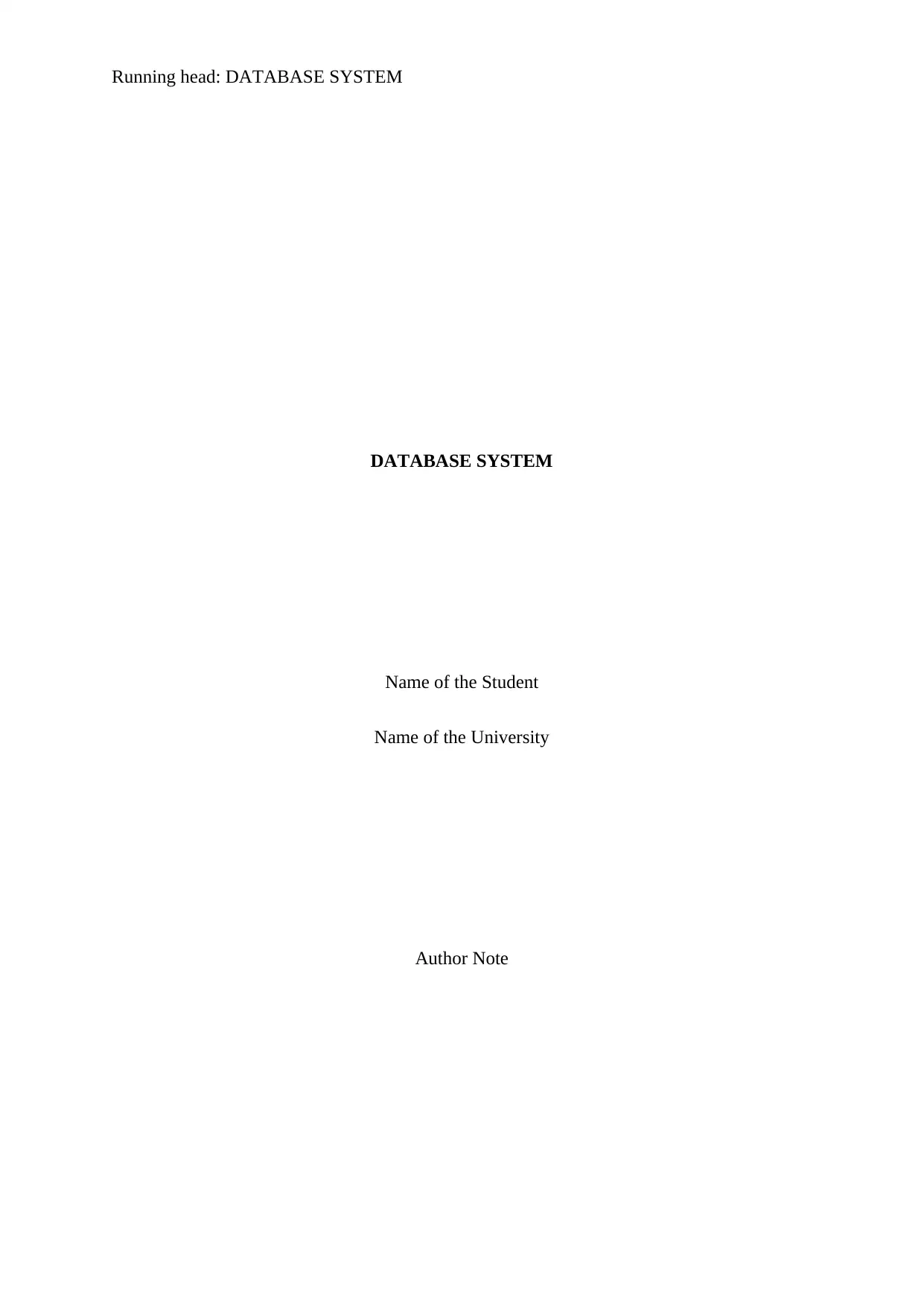
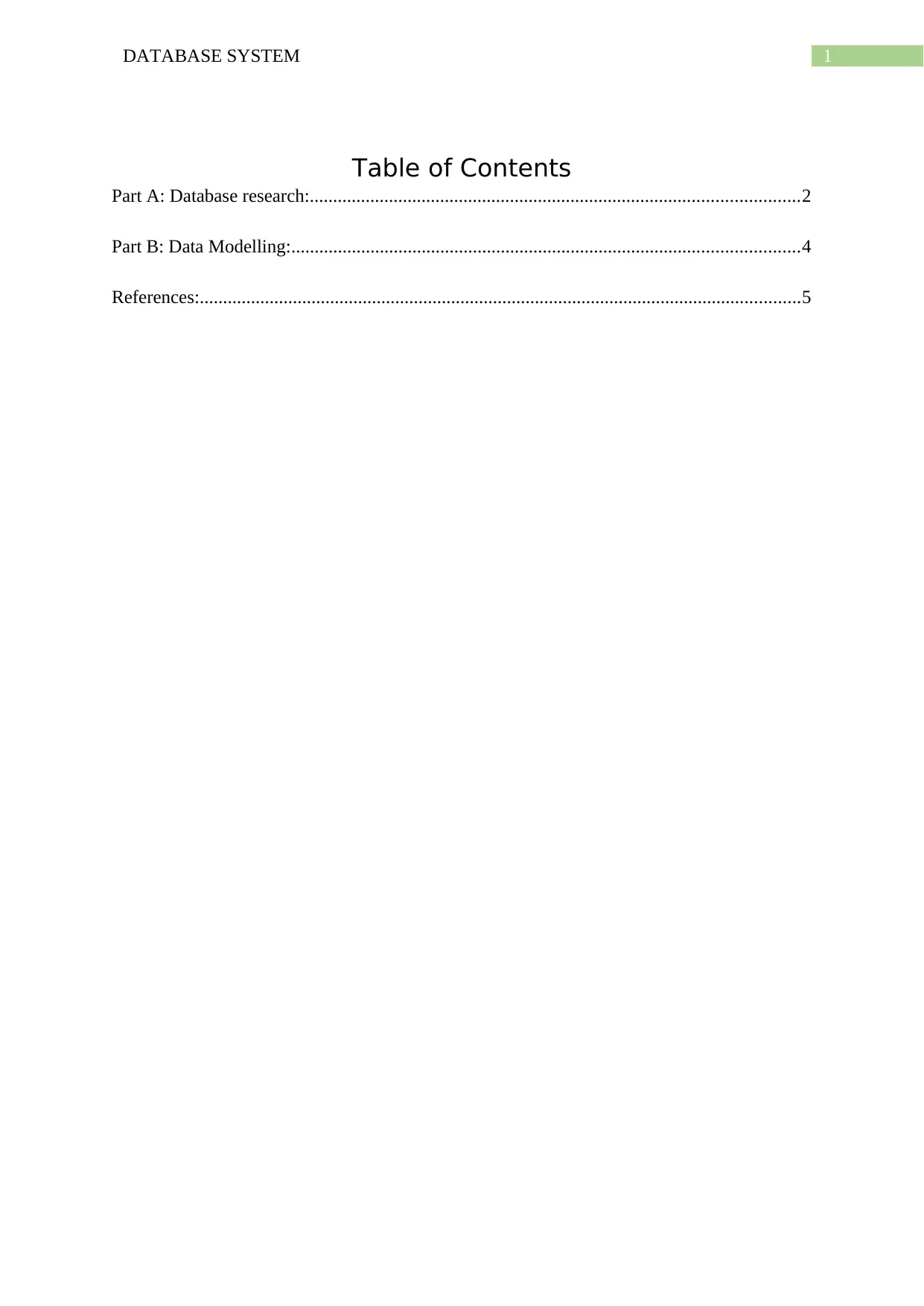
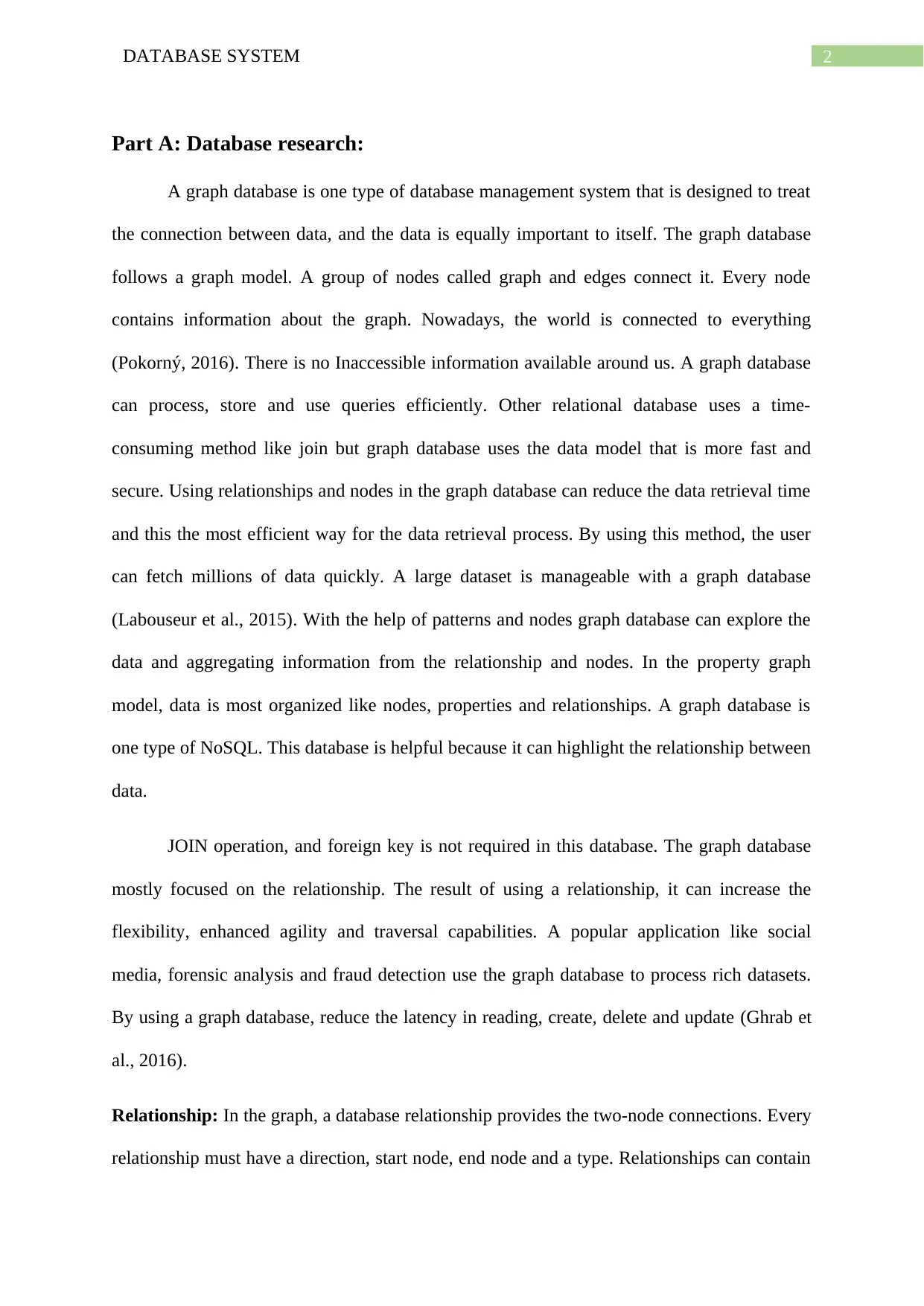

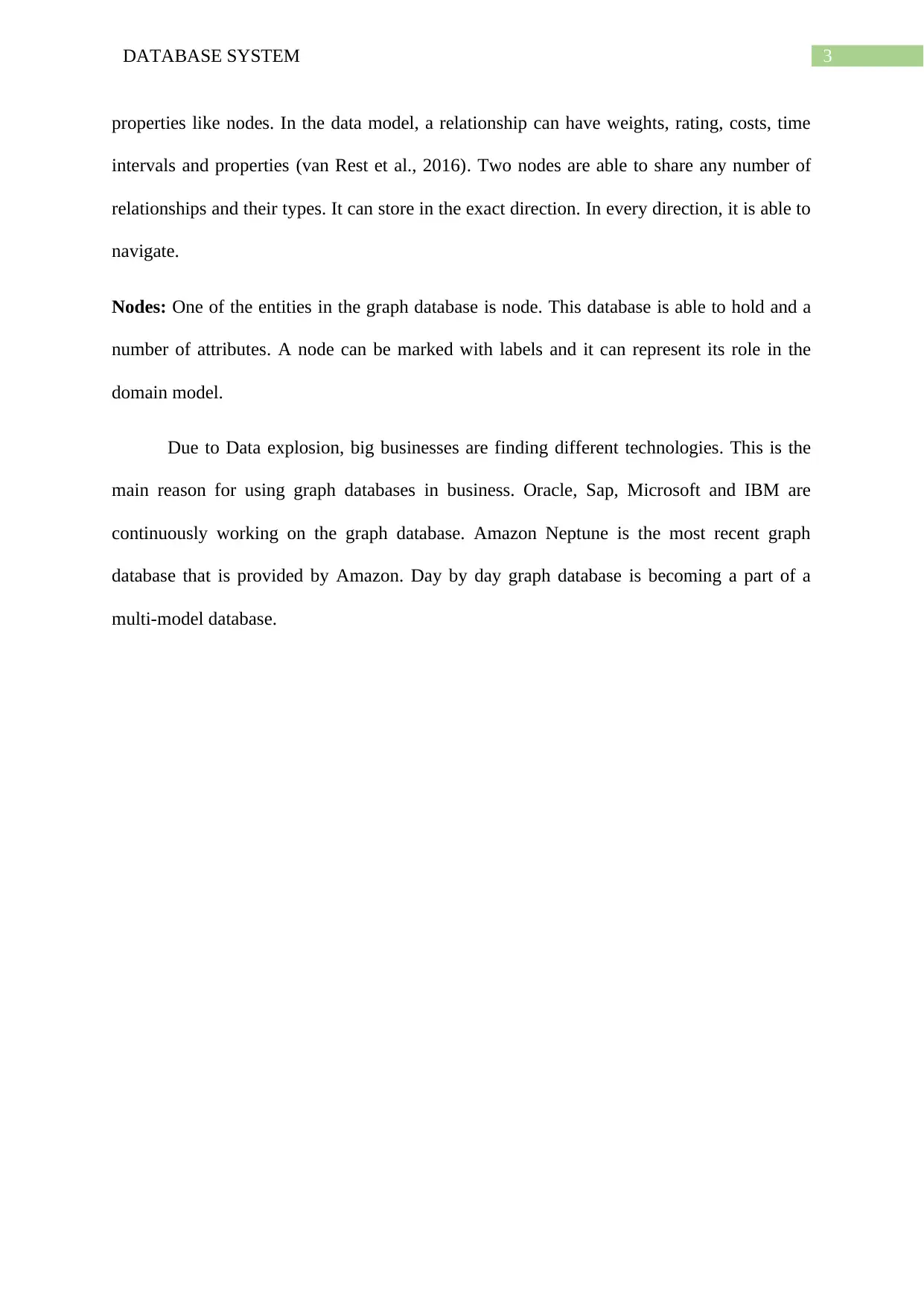

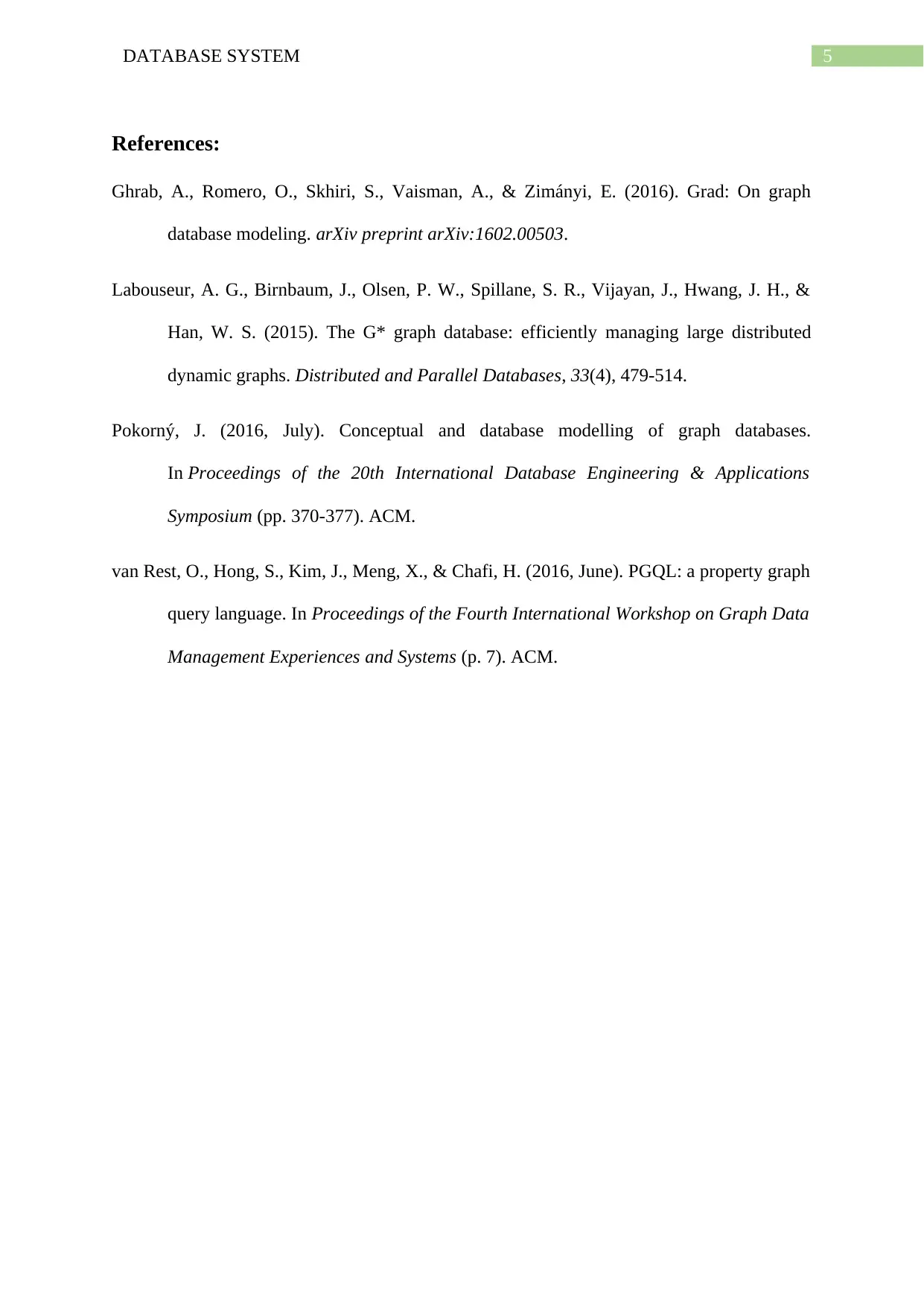






![[object Object]](/_next/static/media/star-bottom.7253800d.svg)